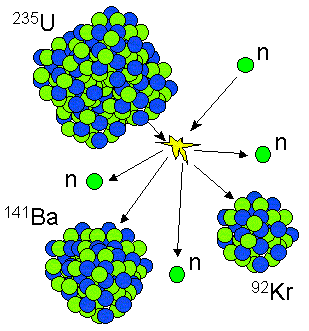Saint
Valued Senior Member
Quarks may be made of string, if string theory is true. Or quarks may be fundamental, in which case we can't say what they are made of.
When we say "fundamental", means it cannot be broken down to smaller pieces?
However, quark can be converted to energy, right?
In nuclear fission (The collision caused the larger isotope to break apart into two or more elements, which is called nuclear fission. ... Matter disappears during the nuclear reaction. This loss of matter is called the mass defect. The missing matter is converted into energy), loss of mass is also loss of quarks, right?
Then, since quark cannot be divided again, how can it become energy?
Quark is still a tangible matter, but energy is not.
What actually happen to make matter transformed into energy?
What happens to the quarks?



